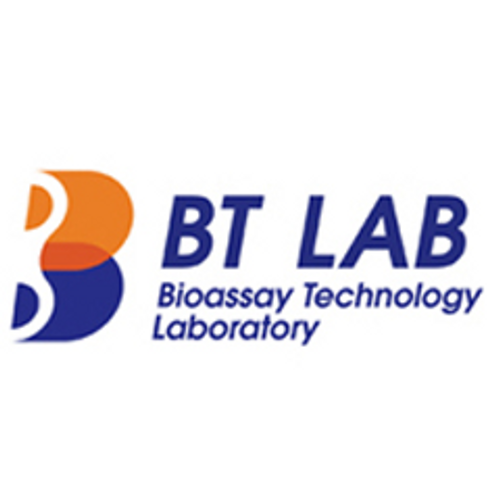Product Description
Human A disintegrin and metalloproteinase with thrombospondin motifs 6 (ADAMTS6) ELISA Kit | AE23846HU | Abebio
Species Reactivity: Human (Homo sapiens)
Abbreviation: ADAMTS6
Alternative Name: ADAM-TS6; a disintegrin and metalloproteinase with thrombospondin motifs 6|a disintegrin-like and metalloprotease (reprolysin type) with thrombospondin type 1 motif; 6
Application: ELISA
Range: 3.12-200 ng/mL
Sensitivity: 0.78 ng/mL
Intra-Assay: ≤4.1%
Inter-Assay: ≤7.8%
Recovery: 0, 98
Sample Type: Serum, Plasma, Other biological fluids
Detection Method: Sandwich
Analysis Method : Quantitive
Test Principale: This assay employs a two-site sandwich ELISA to quantitate ADAMTS6 in samples. An antibody specific for ADAMTS6 has been pre-coated onto a microplate. Standards and samples are pipetted into the wells and anyADAMTS6 present is bound by the immobilized antibody. After removing any unbound substances, a biotin-conjugated antibody specific for ADAMTS6 is added to the wells. After washing, Streptavidin conjugated Horseradish Peroxidase (HRP) is added to the wells. Following a wash to remove any unbound avidin-enzyme reagent, a substrate solution is added to the wells and color develops in proportion to the amount of ADAMTS6 bound in the initial step. The color development is stopped and the intensity of the color is measured.
Product Overview: The predicted 860-amino acid ADAMTS6 protein has a domain structure characteristic of ADAMTSs. Beginning at the N terminus, it has a preproregion containing a potential furin cleavage site and a putative cysteine-switch, a catalytic domain containing a typical reprolysin-type zinc-binding signature and a 'met turn, ' a disintegrin-like domain, a conserved thrombospondin module, a cysteine-rich domain, a spacer domain, and a second, less conserved thrombospondin module. The mature ADAMTS6 protein has 2 potential N-linked glycosylation sites. Northern blot analysis of several human tissues detected an approximately 8.5-kb ADAMTS6 transcript that was expressed at low levels in placenta and at barely detectable levels in a number of other tissues. Adamts6 was not detectably expressed during mouse embryo development.
Stability: The stability of ELISA kit is determined by the loss rate of activity. The loss rate of this kit is less than 5% within the expiration date under appropriate storage condition. The loss rate was determined by accelerated thermal degradation test. Keep the kit at 37°C for 4 and 7 days, and compare O.D.values of the kit kept at 37°C with that of at recommended temperature. (referring from China Biological Products Standard, which was calculated by the Arrhenius equation. For ELISA kit, 4 days storage at 37°C can be considered as 6 months at 2 - 8°C, which means 7 days at 37°C equaling 12 months at 2 - 8°C) .
 Euro
Euro
 USD
USD
 British Pound
British Pound
 NULL
NULL








